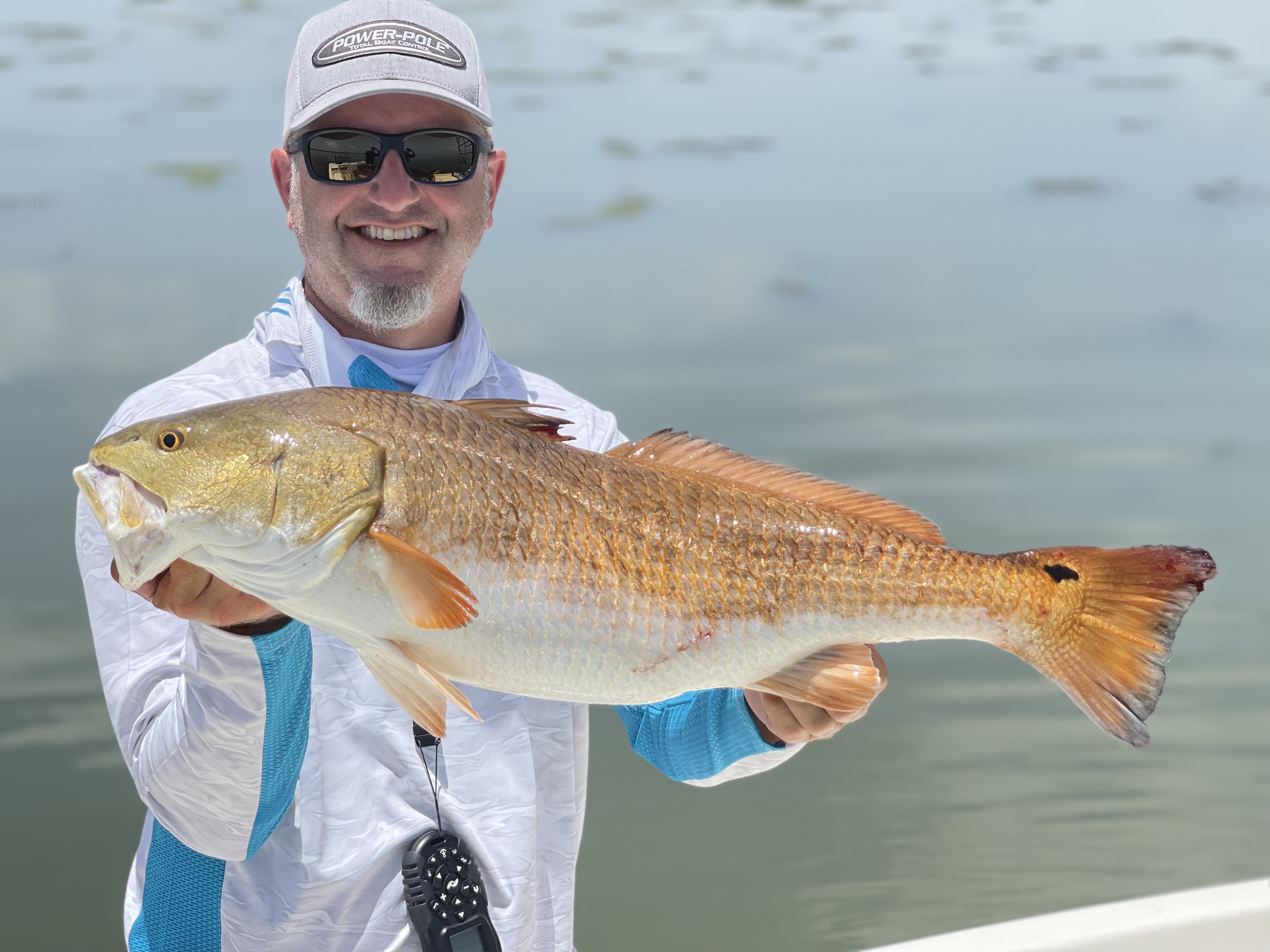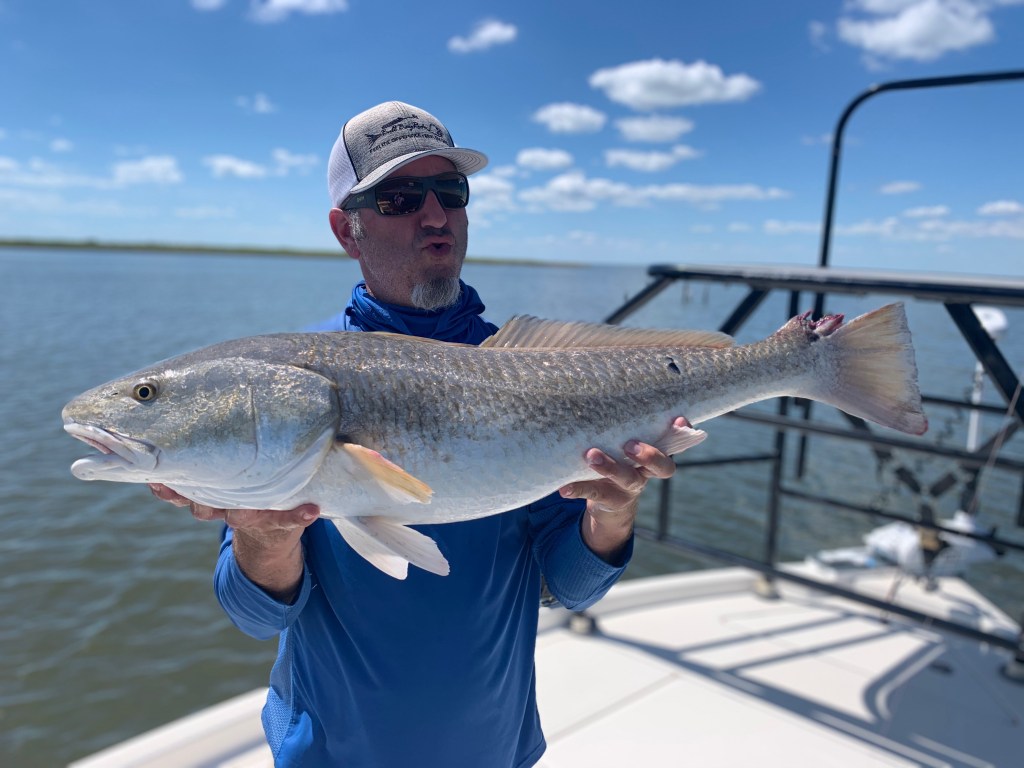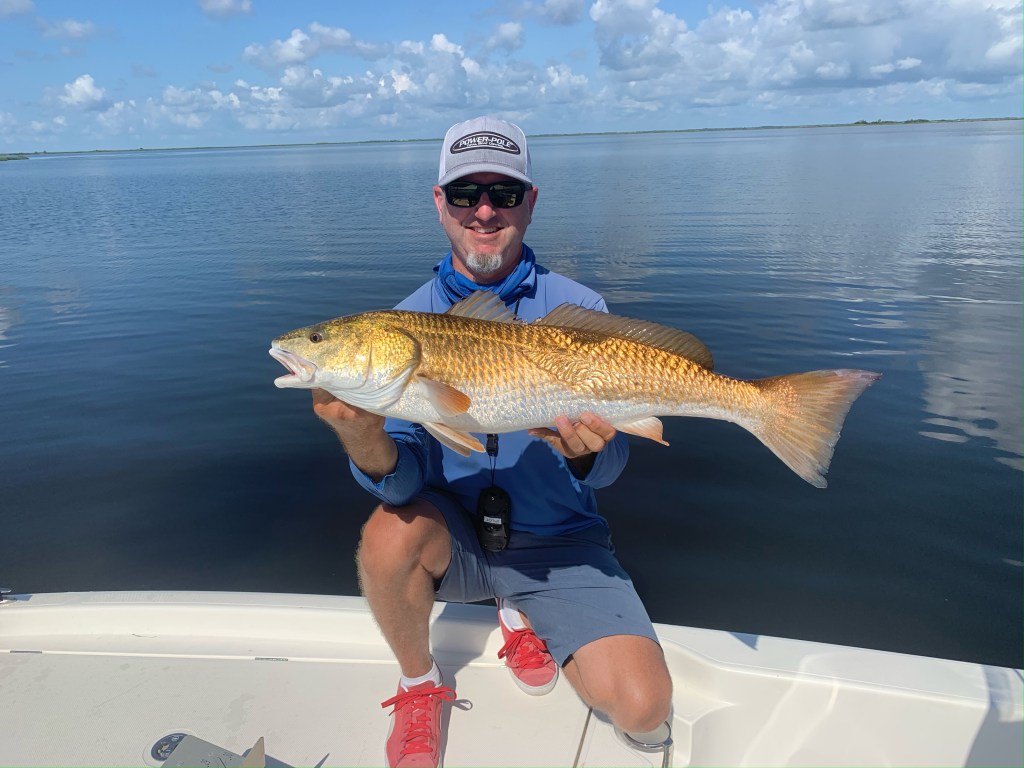
When redfish ace Captain Ryan Rickard partnered with veteran Bassmaster Elite Chris Zaldain to win the 2021 Yamaha Bassmaster Redfish Cup Championship, the Tampa, Fla., pro celebrated his first major redfish victory. That pinnacle’s foundation was based the vast experience Rickard has amassed throughout his 20-plus years of chasing these copper brutes.
Throughout his career as a guide and tournament pro, Rickard has seen just about every type of redfish habitat, so his opinion carries tenured weight. We recently asked the reigning champ for his four favorite redfish destinations and his responses will, no doubt, populate many a bucket list.
What he throws
Before diving into the champ’s favorite spots, let’s look at his bait selection, as it remains largely consistent across the board. Rickard keeps his bait arsenal simple, and with few exceptions, he believes he can get the job done with three main options.
His first choice is a jig with soft plastic paddle tails in colors matched to water clarity. In extremely clear water, Rickard sticks to natural colors — something to mimic mullet, pinfish or pilchard.
“In smoky or stained water, I want something that’s a little more outlandish — something that’s going to bring more attention to that bait,” Rickard said. “I might use a chartreuse bait or a golden bream color that has some gold and red just to get some flash in that stained water.”
Rickard’s next choice is a weedless spoon in chartreuse green, gold or copper. He has no rules of thumb for when/where to throw each color; rather, Rickard shows the fish different looks until he figures out a daily preference.
Completing the list with a topwater bait, Rickard said his favorite is a discontinued Sebile Ghost Walker. This bait has a tantalizing walk, but most importantly, Rickard likes its subtlety.
“A topwater bait is one of the most unbelievable things to throw, in terms of watching the bite happen, but you have to be careful because some people get a little preemptive on the strike,” he said of the requisite hookset discipline. “I like the Ghost Walker because it’s nonintrusive. When I’m throwing topwaters, I don’t want something that’s very (noisy).
“That does depend on the situation. If you have a windy day and you have a lot of bait flow like mullet that are jumping and landing and slapping, you actually may want something that has a little more noise to it so it draws attention to the bait.”
Corpus Christi/Port Aransas
Tops on Rickard’s locations list is only partly nostalgic, as this Central Texas gem boasts a chin-up, chest-out reputation for redfish abundance. However, there’s no denying the personal connection he’ll feel the rest of his days
“Given the circumstance of last year, (the Redfish Cup Championship was held in “Port A”), in combination with the fishery itself, this area is my No. 1 favorite,” Rickard said. “The main reason behind that is that everywhere you go, there is such a concentration of redfish.
“With everywhere I’ve fished for redfish in the South and Southeast, I feel like the Port Aransas/Corpus Christi area has more quantity of redfish than any other area I’ve fished. You still have to find the right ones; it’s just nice to go to every single area and every shoreline and still be able to catch ‘em.”
Noting the added appeal of notching his first “W,” Rickard said he has always felt particularly connected to Port Aransas/Corpus Christi because of its similarities to his home waters of Tampa Bay. As live coverage of Redfish Cup Championship showed, Rickard and Zaldain caught their fish by staking out on a large, shallow grass flat and casting to potholes — a textbook Florida strategy.
“The topography in the Port Aransas area is so similar to home for me,” Rickard said. “It’s a lot of sand holes, the bait flow is very similar and it makes me feel like I’m fishing at home, while having a better fishery to fish.”
Venice, Louisiana
The last populated port on the Mississippi River, Venice enjoys an international reputation for its access to stellar angling options. It’s a long drive down Highway 23, but Rickard said the Delta redfish wonderland is well worth the trip
“I love Louisiana, as a whole, because the sight fishing is second to none,” he said. “You can’t go anywhere in the country and have a better ability to sight fish than Louisiana.
“I like Venice, specifically because there’s such a vast difference between the east side of the river and the west side. You have the ability to get in super shallow flats on the west side, or you can roll off in the deeper water of the east side where you can fish big open bays, roseau can edges, jetties or nearshore drilling platforms.”
Also, Rickard said he appreciates the proximity to the Mississippi River, which meets the Gulf of Mexico through a trio of passes — Southwest, South and Pass A Loutre — south of Venice. When the Mississippi drops low enough, he can fish for reds in the river proper.
“The class of fish in Venice is heavier than anywhere in the country,” Rickard said. “You can catch 10-pound slot redfish there fairly regularly, if you know where to go.
“There is a vast amount of bait flow coming through the Mississippi River and spreading through those fingers (passes and cuts). The redfish in this area have the opportunity to sit there and gorge. The reason they’re fat is because they’re not moving as much.”

Rickard uses his core three baits in the Venice marsh, but when windy days stir Delta waters, he’ll employ a popping cork rig — basically a jig and paddle tail suspended 18 inches below a cork. When tugged across the surface, the float creates a chugging commotion that attracts redfish, even in turbid water.
“When you pop those corks, all of a sudden, you’ll see a big mud puff 50 yards from you; that’s a big redfish turning to come find out what that noise is,” Rickard said. “Sometimes, you’ll see them wake on the surface to come get it.
“When you you can’t sight fish but you don’t want to keep blind casting, you can draw those fish in to you — especially if you have multiple people throwing that popping cork. They’ll come right to it.”
Rickard’s quick to note that the noisy popping cork technique is particularly productive on the Mississippi Delta because some of the remote bayous, ponds and flats host redfish that have never seen a lure. By contrast, the heavily-pressured fish of Rickard’s Tampa Bay home waters demand extreme stealth.
“I guide in Tampa Bay, and you have to make (extremely long) casts just to get close to one of our fish,” Rickard said. “Those Venice fish will eat anything you put near them. I have literally caught them right off my trolling motor. It just blows my mind that they will eat like that.”
Houma, Louisiana
Moving west of the Delta region, Rickard also finds big numbers of unpressured fish, but he particularly relishes the pristine vegetation and the tactical advantage it offers.
“In all of Louisiana, this is the area that has more pretty grass, so I can sight fish better than anywhere in Louisiana,” Rickard said. “Venice has a lot of dirtier water, but you can still sight fish if they’re up in the water column.
“In Houma, even if they’re not floating and snaking on top of the water, if they’re sitting on the bottom, there’s so much grass filtering that water to make it clean, you can still sight fish in any conditions.”
Even unpressured fish have their limits in ultra-clear water, so Rickard exclusively sight fishes Houma with soft plastics on light jig heads or weighted weedless hooks.
Steinhatchee, Florida
Located about three hours north of Tampa, in Florida’s Big Bend region (transition from the peninsula to the panhandle), this remote destination boasts seemingly boundless coastal marshes with far less traffic than more populated areas to the south. A true Florida rarity, Steinhatchee holds big numbers of remarkably cooperative redfish.
“Steinhatchee is the closest thing for us Florida guys to a Texas or a Louisiana,” Rickard said. “There’s a lot of fish, they eat well, they’re not skittish and you can sight fish them.
“If you’re fishing artificials in Tampa, on a great spring day, you can catch 15 to 20. You go to Steinhatchee and have a great day, you can catch over 100, no problem. I have had so many days there where I literally Power-Poled down on a higher tide, just sitting in little coves next to the saw grass and for 2 1/2 hours, caught them on every cast.”
While Steinhatchee reds readily eat a variety of baits, this is one of Rickard’s favorite places to throw topwaters at redfish. These fish can be so relaxed when they’re feeding, Rickard finds he can actually sight fish them with his surface bait.

“You can put that topwater bait 5 feet from them, and they’ll lift their head (from bottom feeding) and chase down that topwater,” Rickard said. “It’s amazing to see.
“The key to success here is to cover as much water as you can and locate where the the bait flow is — whether that’s mullet jumping, birds crashing or baitfish dimpling on the water. Start there and once you catch your first fish, stop and fan cast the area because there’s going to be a lot more in that zone.”
That point, Rickard said will serve anglers well wherever reds may roam.





